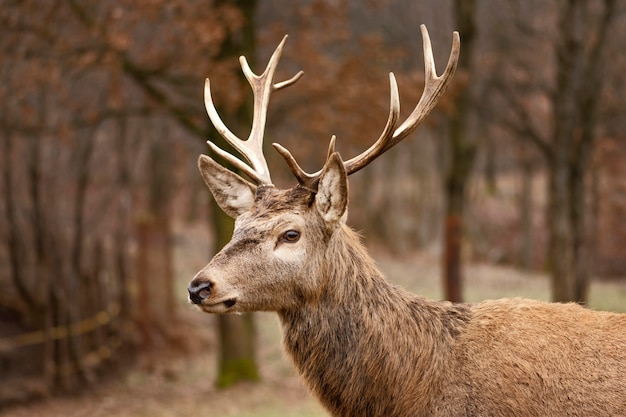Deer, with their graceful and majestic appearance, have captured the hearts of many animal enthusiasts. Their unique antlers and gentle demeanor make them a symbol of nature’s beauty. However, the world of wildlife is diverse, and it’s not just deer that possess these qualities. In this article, we will explore animals that look like deer. From the majestic antelope to the charming reindeer, you’ll be amazed at the variety of creatures that resemble these beloved animals.
Table of Contents
ToggleThe Fascinating World of Deer Look-Alikes
Deer look-alikes are not only captivating but also intriguing due to their physical similarities and differences. These creatures have evolved to thrive in various ecosystems, adapting to their surroundings. Let’s delve into this fascinating world.
The Majestic Antelope
Antelopes are known for their striking resemblance to deer, often mistaken for them. They possess long, slender legs and sport impressive horns, much like the antlers of deer. These magnificent creatures can be found in various parts of Africa and Asia, and they are known for their agility and speed.
The Agile Impala
Impalas, a type of antelope, are graceful animals with slender bodies and distinctive horns. They are often spotted in the savannas of Africa, where their agility and remarkable leaping abilities help them evade predators. Impalas are a true testament to nature’s design.
The Mysterious Caribou
Caribou, also known as reindeer in some regions, are found in the northern parts of the world, including North America and Eurasia. These majestic animals share a resemblance with deer but are adapted to the harsh, cold environments of the Arctic. Their large, branched antlers are a symbol of strength and endurance.
The Graceful Roe Deer
Roe deer are native to Europe and Asia, known for their petite size and delicate features. They closely resemble white-tailed deer, with elegant, slender bodies. Their ability to adapt to various habitats and their agility make them a captivating species to study.
The Elusive Mule Deer
Mule deer are common in North America and are often confused with their white-tailed counterparts. They have large ears, hence the name “mule” deer, and sport impressive antlers. Their unique appearance adds to the allure of the deer look-alikes.
The Nimble Sika Deer
Sika deer, native to East Asia and introduced to various parts of the world, are another group of deer-like creatures. Their striking appearance, with spots on their bodies and a distinct white rump, makes them captivating to observe in the wild.
The Tiny Chinese Water Deer
Chinese water deer, despite their name, are not true deer but rather resemble them in certain aspects. They have no antlers, but their long canine teeth, known as tusks, make them intriguing. Native to China and Korea, these small creatures are a unique find in the animal kingdom.
The Endearing Fallow Deer
Fallow deer are native to Europe and Asia but have been introduced to other parts of the world, including North America. They are known for their beautifully spotted coats and elegant antlers. Their presence in various ecosystems adds diversity to the world of deer look-alikes.
The Charming Reindeer
Reindeer, known as caribou in North America, are iconic symbols of the Arctic. With their thick fur, broad hooves, and magnificent antlers, these animals are adapted for survival in extreme conditions. They are not just associated with Christmas; they are also a remarkable part of nature’s wonders.
The Enigmatic Axis Deer
Axis deer, native to the Indian subcontinent, are characterized by their striking appearance. They have elegant, spotted coats and impressive antlers. These creatures have been introduced to regions like Texas, where they have established populations.
The Rare Pudu
Pudu, native to South America, are among the world’s smallest deer species. Their petite size and adorable features make them captivating. Pudu are well-camouflaged in the dense forests they inhabit, and spotting them in the wild is a rare and exciting experience.
Conclusion
The world of animals that look like deer is diverse and captivating. From the majestic antelope to the petite pudu, these creatures share physical characteristics with deer but have adapted to their unique environments. Exploring the similarities and differences among these animals adds depth to our understanding of the animal kingdom’s wonders.
Unique FAQs
- Are caribou and reindeer the same animal?
While caribou and reindeer are closely related, they are not exactly the same. Caribou are native to North America, while reindeer are found in Eurasia. Both have similar physical characteristics but have adapted to different environments.
- Do all antelopes look like deer?
Many antelope species share a resemblance with deer due to their long legs and horns. However, antelopes come in various sizes and shapes, with some looking more deer-like than others.
- Are there any deer species with tusks?
Yes, Chinese water deer possess long canine teeth, often referred to as tusks. While not true deer, they resemble deer in some aspects.
- How do pudu survive in their dense forest habitats?
Pudu are well-adapted to their forest homes with their petite size, which allows them to navigate through dense vegetation. Their excellent camouflage skills help them avoid predators.
- Can I spot these deer look-alikes in the wild?
Depending on the species and your location, you may have the opportunity to observe these animals in their natural habitats. Consult with local wildlife experts and guides for the best chances of spotting them.





